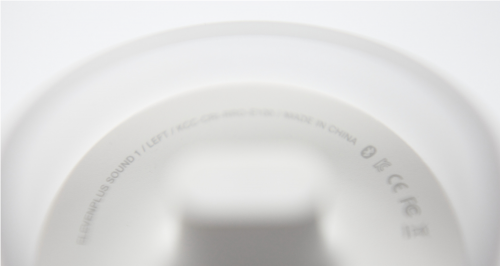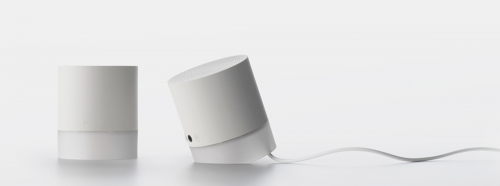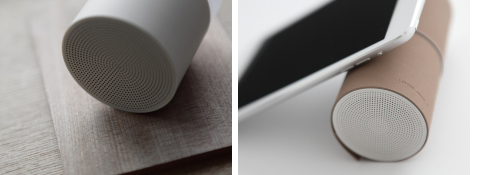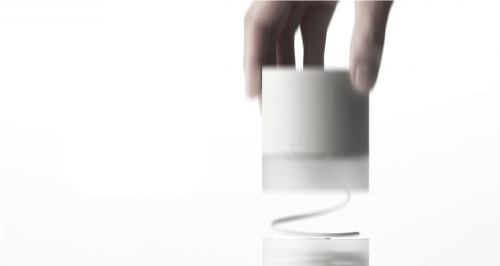 click > enlarge
click > enlarge
There is so much to see at DesignMiami and Art Basel it’s hard to see everything. So you ask, “See anything interesting?” This year ‘Architecture for Dogs’ caught most everyone’s interest. This is an exhibit in the Design District, about 10 minutes from the Design pavilion and Art Basel. Kenya Hara, the art director for Muji assembles 13 notable architects and designers to do what they do best: conceptualize. Each concept comes with a free downloadable blueprint as well as instructions and videos demonstrating customization. You can pick by dog, degree of difficulty or simply your favorite. The end products are so cute you don’t even need to own a dog. Hara sees the project as an opportunity to explore architecture in a different way. And that’s what’s really so interesting along with the DIY concept.

beagle house / interactive dog house | mvrdv
The curved shape invites the dog to enter the house, stimulates play and offers a comfortable and quiet space. Every time the dog enters or exits, the house answers with a subtle motion. The rounded bottom touches the ground gently with little friction. The rope attached to the house makes it easy to move for both dog and owner, and humans can easily carry its wedge shape. The interaction with humans is made more obvious since the curved lines reach human eye level. The firm and active Beagle has inspired us to design a simple, strong and playful object.

papier papillon | shigeru ban
With just two wires, the paper tube found inside the ubiquitous cylinder of plastic wrap changes shape, making a space for dogs. You can make a bed, a swing, a maze-like environment, even a chair or table for yourself.

architecture for the bichon frise | kazuo sejima
The fur of the bichon frise is distinct. Extremely white, soft and fluffy, it’s like cotton candy, or a whisp of cloud. This architecture resembles the bichon frise–with its fascinating fur, but one size larger. Our goal was to create a shape that would be completed by the reclining bichon frise. Dog and architecture would become one.

no dog, no life! / boston terrier | sou fujimoto
This is the house where the dog lives, inside the house where the people who own the dog live. This architecture is a living space for the dog, as well as furniture for the people, a garden within the house, as well as a gentle boundary between the people and the dog. Humans artificially turned dogs into pets. Dogs, as pets, therefore lose their animal understanding. NO DOG, NO LIFE! is a new architectural space meant to act as a framework within which humans and dogs can, as they live together, interact proactively.

dachshund smooth / architecture for long-bodied-short-legged dod | atelier bow-wow
Because of their short legs, it’s hard for dachshunds to meet their masters’ eyes. Also because of their short legs, it’s hard for them to get up on chairs. Is there no good way to get closer to the eyes? Stairs? Let’s make it long enough so a person can lie down too. Sunbathing with your dachshund on the veranda is good. If you connect several, they can go anywhere, and form any shape. Multiple stacks in an atrium space make a ramp for the dogs to go upstairs.

mobile home for shiba | toyo ito
Whether it rains all day, or the asphalt is hot, whether the dog has aged and its legs and loins are sore, dogs want to go out for a walk with their owners everyday. I attached tires to a well-ventilated wooden basket. The crate floor is designed to be as close to the ground as possible so that the dog could board and disembark by itself. In addition, because it can act as a bed that fits in the entryway or inside the house, it is even more of a mobile doghouse.

mount pug | kengo kuma
Mount Pug is a mesh-shaped “mountain,” assembly of thin and long 600mm (plywood) pieces as “branches.” By combining the unevenness of each branch to form in hexagon and triangle, the “branches” begin to support each other as if the cells of living creatures. The “mountain” can gain enough strength from it without nails or a bond. Pug is clever and mischievous. It makes full use of the mesh as its nest and plaything. Toys and snacks can also be hung on the mesh.

dog cooler / spitz | hiroshi naito
My beloved dog, Pepe, who the year before last passed away at the ripe age of sixteen, and who spent with me the busiest years of my life, was a dear friend. Summer in Japan, hot and humid as it is, is the worst climate—for people and dogs. His favorite summer spot was the ofuro-ba, or bathing area, where he would lower his body temperature by lying on the tile floor. By inserting a plastic bag filled with ice into the highly thermally conductive aluminum pipe, you can expect quite the cooling effect. I decided to tuck wood slats in between the metal tubes, to allow the dog’s claws to get a firm hold. Connecting the metal to the wood with rubber hose allows the dog to feel comfortable and relaxed on this cooling contraption, which can be adapted to the layout of your room. This piece is my tribute to Pepe.

pointed t / japanese terrier | hara design institute / haruka misawa
Take one large sheet of heavy paper. Cut a part off and fold it. Hang it from the ceiling and you have a territory for your dog in the room. You don’t need nails or any construction tools. A house without walls, whose roof just floats, is completely different from traditional doghouses, creating an ambiguous space for the dog. When a Japanese terrier is in the house, his head is completely hidden, but you can see his skinny legs through the gaps, prancing along, and it looks exactly like he’s wearing a big pointy hat. For the dog, it’s a house, but for humans, it’s a unique dog object.
 <a
<a
wanmock / jack russell terrier | torafu architects
Observing the favorite place of this dog, whose qualities make him a good partner for people, we found that he’s happiest on his master’s clothes. The smell and the feeling of the fabric set the dog at ease. So we devised a piece of furniture for the dog to inhabit that would incorporate the master’s clothes. For summer, a material that lets the air through; in winter something thicker; the clothing can be changed with the seasons. We came up with two building methods and frame materials, plywood or decking, the choice of which can be determined by the user’s DIY skills. In Japanese, a dog says, “wan”. The name “Wan-mock” combines the woof and the piece’s signature “hammock” style.

paramount for toy poodle | konstantin grcic
I have recently come across an article about the so-called “Mirror Test”, which is used by neurologists to examine the self-awareness of animals based on whether or not they can recognize themselves in a mirror. Among the ‘lesser’ creatures the great apes, dolphins, elephants, and rats are the only ones confirmed to recognize the image in the mirror as themselves. Humans, out of interest, are only able to accomplish the test after they’re 18 months to 2 years old. Dogs have been ruled complete failures at self-awareness which can be explained by the simple fact that they are relying primarily on senses other than sight. Having said this, there is a group of poodle owners who are gathering in respective internet forums to debate their fervid disagreement with this assumption. They claim that their poodles are reacting positively to mirrors and displaying unmistakable signs of self-awareness.

d-tunnel / teacup poodle | kenya hara
I thought up a device/installation that equalizes human scale and dog scale, or in other words, a scale modifier. For instance, each step of a stairway is 15cm high, around the world. This came to be naturally because of the height of humans and the length of their feet. The same goes for the existence and size of doors, in fact, the size of houses and cities are predicated on the human body. Accordingly, dogs, who spend their lives at the side of humans, must accept human scale. This architecture is an apparatus for the purpose of naturally bringing dogs and humans eye to eye. As for those super-small dogs, who spend all their time looking up, definitely let them try it out!

chihuahua cloud | reiser + umemoto
The Cloud is architecture that travels with the dog, a second skin that communicates the uniqueness of any given Chihuahua’s body and temperament. Designed to suit the specific needs of this feisty breed, the Cloud creates a climatic buffer to shield the dog from cold, and provides protection for the general weakness of the dog’s bones—including the soft spots around the skull (moleras) and the sensitive area near the eyes. In the Cloud the dog is warm, protected, and secure. Furthermore, the Cloud serves as a veil that neutralizes preconceptions about the size of Chihuahuas. The illusion of larger mass is befitting of the Chihuahua’s big personality. For the DIY enthusiast, the intricate process of crafting the Cloud creates an opportunity for the owner to make something special for their pet, thereby strengthening their relationship.
[ architecture for dogs ] [ hara design institute ] [ muji ] [ designmiami ]

























